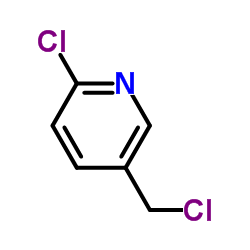| Structure | Name/CAS No. | Articles |
|---|---|---|
 |
2-Chloro-5-chloromethylpyridine
CAS:70258-18-3 |
| Structure | Name/CAS No. | Articles |
|---|---|---|
 |
2-Chloro-5-chloromethylpyridine
CAS:70258-18-3 |